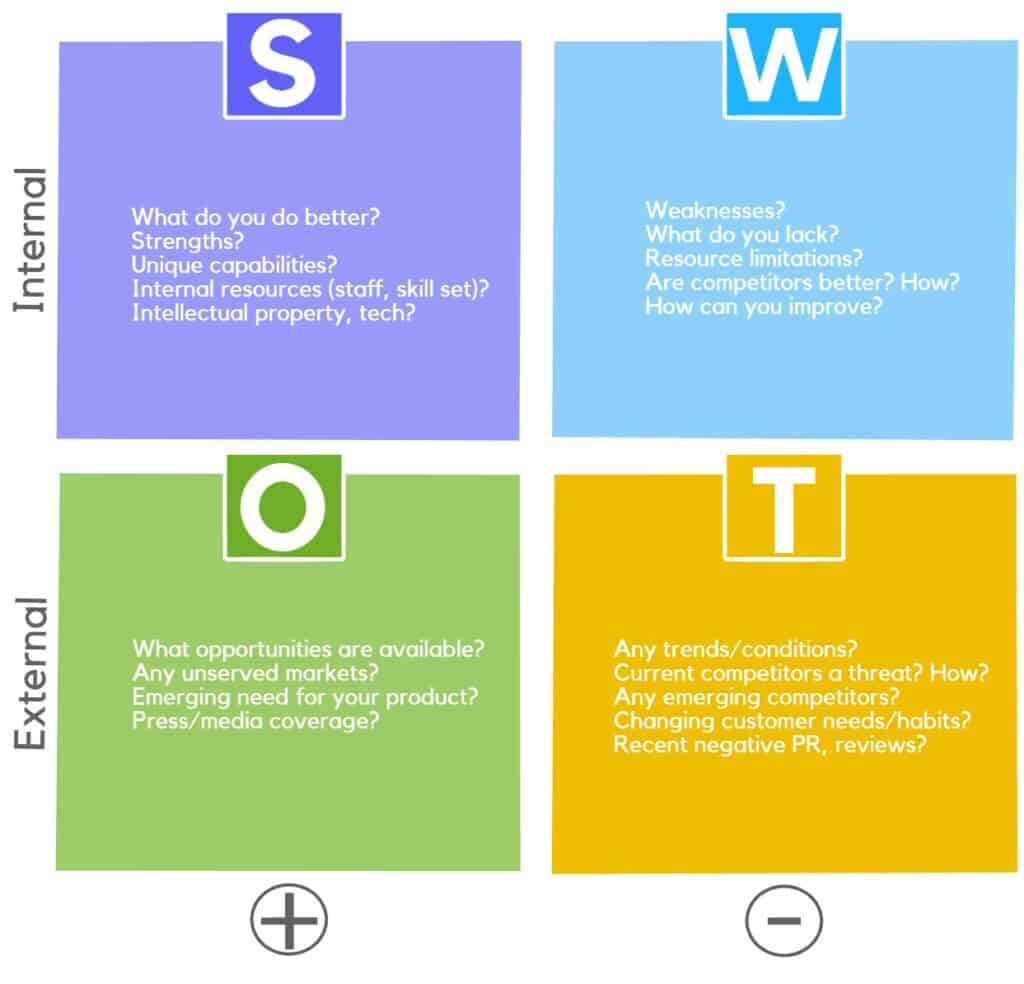Change is a constant in the business world, yet it is still one of the most difficult things to manage.
From setting the right goals and creating an effective plan to engaging employees and understanding the impacts of change, the process of navigating change management can be daunting.
It can be difficult to navigate change management projects, especially for business leaders within growing companies.
This guide provides an overview of change management for business leaders, with a focus on managers within growing companies.
Understanding Change Management
Change management is an important part of organization culture and development. It involves the process of managing any changes to an organization’s existing systems or processes, such as introducing new technology or restructuring roles and responsibilities.
Effective change management seeks to identify and overcome resistances from stakeholders, while balancing organizational goals.
In order to manage change effectively, organizations need to implement strategies that address the impact on employees, customers, systems, processes and other factors.
Doing so can help ensure a smooth transition through periods of change which can lead to long term success for the organization.
As a process of anticipating and managing the impacts of transformation or changes within an organization, it involves recognizing potential impacts, formulating plans to overcome those impacts, and keeping a close eye on progress to guarantee successful implementation. This process is essential for bringing about desirable outcomes with minimal disruption to operations.
All in all, change management is an essential component to consider when making changes within an organization.
By understanding how it works and embracing its importance in the workplace, organizations can ensure successful transitions and minimize disruption to normal operations.
Taking the time to properly plan for change management helps reduce any potential risks associated with major modifications so that organizations can focus on improving their overall efficiency.

There are three main stages to any successful change management project: identification, implementation, and monitoring.
In the identification stage, it is important to accurately assess both the current state of your company and where you would like it to be in the future. This means setting clear goals and objectives for the project.
Once these have been established, you can move on to assessing which changes need to be made in order reach your desired state. Not all changes will be equally important or urgent; prioritizing them will help ensure that your resources are used effectively.
In the implementation stage ,you will need put together a team who will carry out the necessary changes. This team should include people from different departments and levels within your company so that no area is left unaddressed. They will also need support from senior leadership throughout this process.
In the monitoring stage, you will need to develop and implement a change management strategy. This will include identifying the changes that need to be made, assessing the risks associated with those changes, and implementing measures to mitigate those risks.
Additionally, you will need to ensure that all stakeholders are aware of the changes and their impacts on their workflows and responsibilities. Finally, you will need to monitor progress towards objectives and make any necessary adjustments in response to feedback from stakeholders.
There are various models and frameworks that businesses can use to help them with change management projects. These include the Change Management Plan template from Prosci (a leading provider of research-based tools for managing organizational change), as well as templates from the Project Management Institute (PMI) and other project management organizations.
Successful change initiative requires three key elements:
- a champion or sponsor who will lead and drive the initiative;
- a structured approach or methodology that outlines how the initiative will be carried out;
- communication plans to ensure everyone understands what is happening and why.
Developing a Change Management Plan
Change management is an integral part of the modern business landscape and developing a comprehensive plan is essential to ensuring that changes are implemented in a smooth, effective manner.
This plan should consider the impact on customers, employees and partners as well as taking into account the financial implications of any proposed change.
The right change management plan will set out clear objectives, processes and timelines for any changes that are to be implemented, facilitating a successful transition for all stakeholders involved.
Change management is an important process for successful organizational transformation. A well-crafted plan should clearly outline objectives, timelines, roles and responsibilities to ensure the success of this transition.
When these elements of change management are properly considered and allocated, businesses can have a smoother path to successful implementation.
Your plan should:
- Identify the need for change
- Analyse the current situation
- Set objectives and goals
- Develop a strategy
- Get support and resources
- Monitor and adjust plan
- Implement the change
- Evaluate the results
The plan should identify who will be responsible for carrying out the changes, establish timelines and communication protocols, and track progress.
Meanwhile, regular meetings during the change management process are essential to a successful transition period. They allow all stakeholders to be on the same page and can help manage expectations throughout the process.
These meetings provide an important platform for progress tracking and goal setting, helping ensure that the change management plan is completed without any unexpected roadblocks or delays.
Identifying Key Players in Change Management
In order to ensure that the desired outcomes are achieved, it is important to involve executive leadership, middle management and frontline staff.
Each group will likely have different expectations for the upcoming changes and be impacted in unique ways; therefore, engaging with each stakeholder is critical for making progress on any transformation initiative.
Change management can be a complex and difficult task, and it’s important to bring in external resources and experts who can provide insight or advice on how best to execute the necessary change.
They can offer valuable knowledge about industry trends or suggest innovative solutions that you may not have considered. Enlisting the help of experienced change management professionals is an essential part of successfully executing changes within an organization.
Moreover, effective change management implies that all employees are made aware of the upcoming changes and encouraged to provide input.
Having an effective communication system in place is essential to ensure employees are able to accurately understand the implementation process and can communicate any concerns they may have.
A strong communication strategy is key for a successful change management plan.

Optimizing Your Workforce Through Change Management
Change management is an essential tool for optimizing your workforce. It is used to help ensure that changes are implemented efficiently and effectively. It provides the strategies, techniques, and tools to manage the people side of change, allowing your organization to maximize value from the process and minimize risks.
Understanding how important change management is for effective operations will help your organization understand why it must be utilized in order to make sure any new changes are adopted successfully.
Effective change management can be a powerful tool for any business. It can help to reduce resistance to change, as employees will have an understanding of the reasons behind it and a clear plan on how to execute it.
Furthermore, effective change management can help increase motivation among your employees by providing them with measurable goals that result in a feeling of achievement when accomplished.
It is important for businesses to employ strategies that ensure meaningful and successful change management processes.
Similarly, understanding the impact of change on all areas of the organization is essential for creating a successful strategy to manage the transition period and ultimately achieve long-term success.
Planning ahead and paying attention to all organizational stakeholders can help businesses ease into changes and have a smooth transition. The key is to recognize the importance of planning for change early on in order to be successful in implementing changes in an organization.
Establishing Clear Communication Strategies
Clear communication is an absolute necessity, without it your team may not understand the need for the changes or be fully aware of their implications.
Initiatives require frequent and direct messaging from company leaders in order to make sure employees have a thorough understanding of what is expected of them and how the changes will improve their daily lives. The success or failure of any change initiative greatly depends on the effectiveness of its communication strategy.
Overall you should see this as a process which requires clear and detailed communication at all stages. Establishing specific goals and expectations should be an integral part of the communication process in order to ensure that everyone has the same understanding and is fully aware of their responsibilities.
Without this, it can be difficult to ensure that success will be achieved as individuals may not understand exactly what needs to be done.
By setting specific goals and expectations, change management can become more efficient with less miscommunication or confusion along the way.
Moreover, effective change management requires continuous communication with all stakeholders to identify and address any potential issues early on in the process.
This helps keep everyone updated and facilitates a smoother transition towards achieving the desired outcomes of the change initiative. Regular communication is essential for successful execution of any change management strategy.
Enhancing Your Change Management Approach Over Time
Change management is vital for successful organizations, as it ensures that processes and operations stay aligned with the organization’s overall objectives.
It is important to regularly assess your change management approach and identify areas for improvement, such as improving internal communication strategies or promoting a sense of ownership among team members.
Analyzing feedback from stakeholders can help to gauge the effectiveness of change initiatives and provide insight into any potential barriers to progress. By taking an honest look at your current approach and identifying areas for improvement, you can ensure that processes remain up-to-date and effective in meeting organizational goals.
Change management is an important part of any successful organization. Encouraging a culture of continuous learning helps team members stay current with the latest trends and techniques, so it’s essential to encourage team members to share their knowledge and experiences with one another.
Doing so helps create a collaborative environment where everyone can learn from each other, which can lead to more successful change management.
Furthermore, knowledge sharing allows team members to gain valuable insights into how colleagues may approach different tasks or projects and possibly even develop new ways of working together that could be beneficial for the organization as a whole.
Besides leveraging technology to help automate processes and streamline communication across departments and stakeholders, successful change management requires a proactive approach to assessing the potential impacts of proposed changes.
An effective change management system includes a formal structure for identifying, analyzing, budgeting, and scheduling changes while minimizing disruption.
Establishing mechanisms that allow people to provide feedback on proposed changes also ensures that stakeholders understand potential impacts of the new direction an organization is taking.
Wrapping up
We’ve covered a lot of different ideas, here are the key points you should keep in mind.
The Purpose of Change Management:
When it comes to change management, it is important for business leaders to first identify the objectives and goals of the project.
What does your company hope to achieve by implementing this change?
Once you have a clear understanding of the purpose of the project, you can then develop a plan on how best to go about achieving these goals.
Change management can be a complex process, but if you take the time to lay out all of your objectives from the start, it will make things much easier down the road.
Stakeholders in Change Management
There are four main categories of stakeholders in a change management project: sponsors, champions, project team members, and resistors.
Each group plays an important role in the success or failure of the initiative.
Sponsors are the senior executive who provides funding and political support for the project.
Champions are middle managers who sell the idea of change to their subordinates and help them overcome resistance.
Project team members carry out the actual work of implementing changes.
Resistors are those employees who oppose or block changes from being implemented successfully. It is important to identify each group early on in order to develop an effective strategy for managing them throughout the duration of the project.
Different Types of Changes That Might Occur in Business
Different types of changes that might occur in business are organizational, process, and product changes.
Organizational changes usually involve reorganizing the company’s structure, while process changes typically refer to improving or streamlining existing processes.
Product changes can be anything from developing new products or services to discontinuing old ones.
In some cases, all three types of change may take place simultaneously.
Leaders must carefully consider which type(s) of change are most appropriate for their organization at any given time. Implementing too many different types of change at once can be overwhelming and lead to chaos; on the other hand, failing to make enough changes can stall a company’s growth and development.
Preparing for Change
When preparing for change, it is important to assess your company’s readiness. This can be done through a SWOT analysis, which will help you identify your company’s strengths, weaknesses, opportunities, and threats.

By understanding these factors, you can better prepare for the changes that lie ahead.
“Leading” the Change Process
As the business leader, it is your responsibility to create a plan for change and manage its implementation. This can be a daunting task, but there are steps you can take to make it easier.
First, consult with those who will be affected by the change. Find out what they need and want from the new system or process. What will make their lives easier? What are their concerns? Addressing these needs and wants early on will help ensure buy-in from everyone involved.
Next, develop a clear plan of action. Outline each step of the process and assign deadlines. Be sure to allow for flexibility in case unexpected obstacles arise (which they inevitably do). Delegate tasks to individuals or teams as appropriate, making sure that everyone understands their role in making the change happen successfully.
Finally, stay focused on your goal throughout the entire process – don’t get sidetracked or discouraged if things don’t go perfectly according to plan.
Navigating Organizational Politics During Times of Transition
Organizational politics can be a major obstacle during times of transition. Business leaders need to be aware of the political landscape within their company and navigate accordingly.
Depending on the size and structure of your organization, there may be different power players that you need to take into account.
The key is to stay focused on your goals and maintain open communication with all stakeholders throughout the process.
Communicating Effectively About Upcoming Changes
When it comes to communicating about upcoming changes, it’s important to have a clear and concise plan. This way, everyone on your team knows what to expect and can stay focused on the task at hand.
Additionally, effective communication often leads to less conflict and more collaboration. So make sure you put in the effort up front to ensure a smooth transition!
Can Innovative Approaches to Change Management Be Applied to Business Leadership?
In today’s dynamic business environment, implementing innovative change management approaches is crucial for effective business leadership. By embracing new and unconventional methods for managing change, leaders can adapt more quickly to market shifts, engage employees, and drive sustainable organizational growth. Embracing innovation in change management can set businesses apart in their leadership approach.
Evaluating the Success of Your Change Initiative
Leaders must be able to effectively communicate about upcoming changes in order to gain employee buy-in and support. This means being clear and concise about what the change is, why it’s necessary, and how it will benefit employees and the company as a whole.
It’s also important to keep communications ongoing throughout the entire process so that everyone is kept up-to-date on progress and knows what their role is in making the change successful.
Once the initiative has been implemented, it’s critical to take stock of how well it went and make adjustments as needed.
This includes soliciting feedback from employees on their experience with the change so that you can learn from any bumps along the way.
Final Say
In conclusion, implementing change management strategies for business success is essential for businesses of all sizes and industries to ensure a successful transition and help them reach their full potential.
Change can be difficult to manage, but having the right strategy in place can help make the process smoother.
By creating a specific plan of action, communicating it effectively to all stakeholders, and taking the time to listen to feedback, businesses will be better equipped to handle change and embrace the transformation that comes with it.





